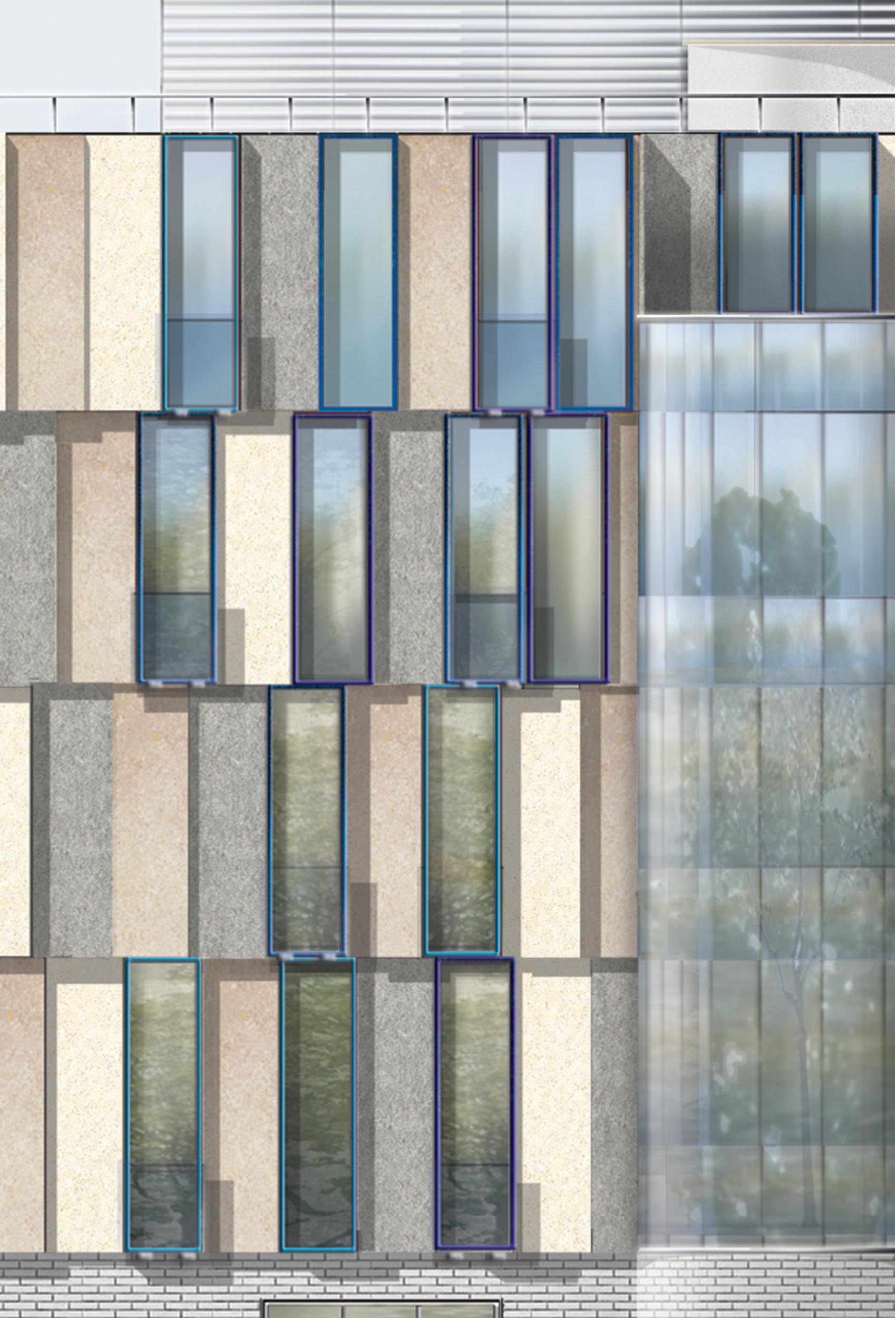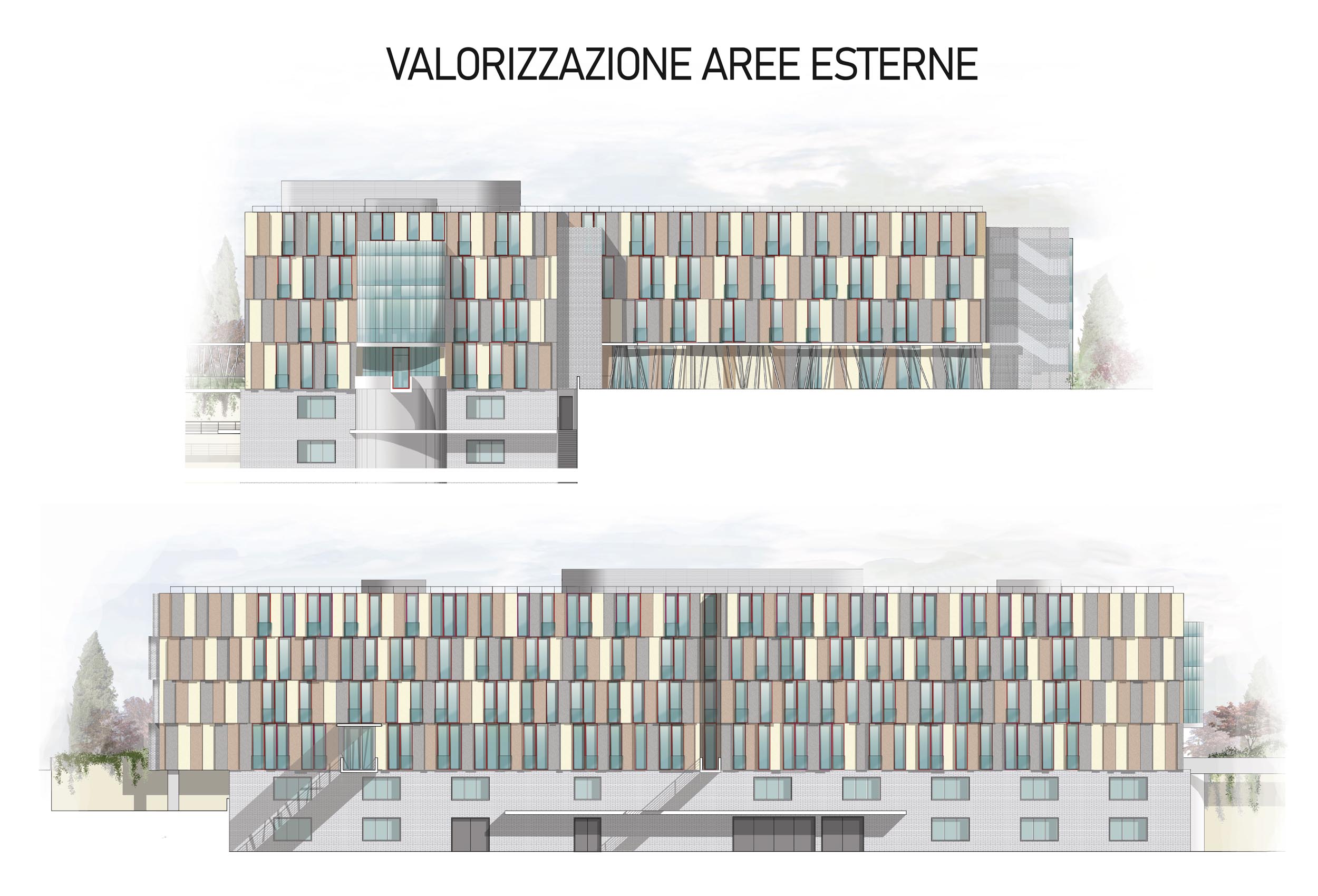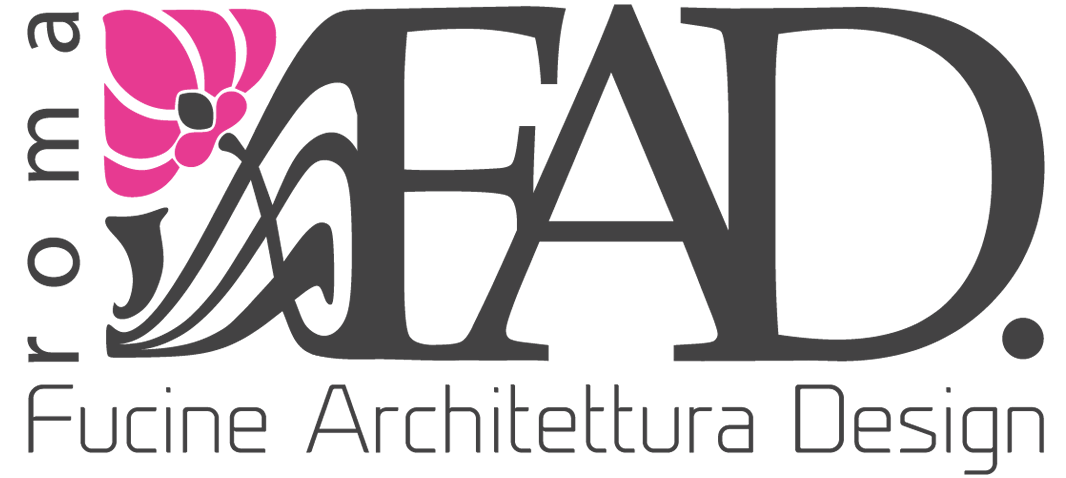Breathing architecture
Location: Rome
Area: 4.500 Smq
Client: Companies Association
Project time: 2014
Detailed technical offer - public tender - Via Boglione, rome
When we restyle a building or a whole architectural complex, we always consider the ecological aspect, that is particularly important and significant for us. In this project, we have used technologies allowing us to keep the conditions inside the buildings under control: temperature, humidity, air healthiness, elimination / minimization of polluting substances, environmental and acoustic comfort.
When we restyle a building or a whole architectural complex, we always consider the ecological aspect, that is particularly important and significant for us. In this project, we have used technologies allowing us to keep the conditions inside the buildings under control: temperature, humidity, air healthiness, elimination / minimization of polluting substances, environmental and acoustic comfort.
To achieve a substantial improvement of the project at the base of the public tender for the redevelopment of the real estate complex in Via Boglione, we have planned to use environmentally friendly materials, with low energy consumption and low waste production. The materials selected and the project choices aimed at improving the thermal and hygrometric welfare conditions, the air quality, as well as the environmental, acoustic, and luminous comfort. Moreover, additional works were planned for the areas excluded from the project at the base of the tender, and a number of interventions have been considered to improve the usability of the external areas of the building. In addition, a series of aesthetic improvements have been adopted for the façades of the buildings and the external appurtenant areas, as well as a number of concealing systems of the mechanical plants present.
Particular attention was paid to the materials choice, with the use of materials with low environmental impact both for their disposal at the end of life, and during the production phase, with low waste production and low energy consumption; consequently, with lower CO2 emissions. To also reduce transport pollution, we have chosen locally produced materials whenever possible. Our attention was therefore focused on those manufacturing companies that have developed modern production techniques, using easily available materials, that require little energy for processing and which - in any case - are not hazardous for our health.
These improvements involved almost all the materials, such as the blocks used in the masonry and plasterboard internal partition walls, the self-levelling smoothing, the mortars, the joints sealing, the plasters, the skim plasters, the false ceilings, the waterproof surfaces, the paints, etc. All our constant efforts were made towards the following objectives: to assess the materials to be used, giving preference to natural ones; to choose construction typologies allowing a correct perspiration and ventilation of the building; to design in accordance with Legislative Decree 311/06 (and its subsequent amendments and additions), the European legislation on energy saving and the directives of the Kyoto Protocol.
Particular attention was paid to the materials choice, with the use of materials with low environmental impact both for their disposal at the end of life, and during the production phase, with low waste production and low energy consumption; consequently, with lower CO2 emissions. To also reduce transport pollution, we have chosen locally produced materials whenever possible. Our attention was therefore focused on those manufacturing companies that have developed modern production techniques, using easily available materials, that require little energy for processing and which - in any case - are not hazardous for our health.
These improvements involved almost all the materials, such as the blocks used in the masonry and plasterboard internal partition walls, the self-levelling smoothing, the mortars, the joints sealing, the plasters, the skim plasters, the false ceilings, the waterproof surfaces, the paints, etc. All our constant efforts were made towards the following objectives: to assess the materials to be used, giving preference to natural ones; to choose construction typologies allowing a correct perspiration and ventilation of the building; to design in accordance with Legislative Decree 311/06 (and its subsequent amendments and additions), the European legislation on energy saving and the directives of the Kyoto Protocol.



The bioclimatic design, together with the green building, allows to optimise the energy and environmental performances of the project, being based on assumptions of environmental integration and landscape respect, to create healthy and comfortable working environments.
A self-regenerating roof garden, without irrigation system, was built for the front-office and the canteen; large cannon-lumière shaped skylights were installed to improve internal visual comfort; two canopies were built to reduce the summer solar irradiation from the facing South windows of the front-office and canteen, thus ensuring a better thermal comfort in the internal rooms in the summer months, and without neutralising the free solar contribution in the winter months.
The insulation of the flat roofs of all the environments was planned, as well as the insulation of the walls, with the optimisation of the relationships between blind and opaque parts of the façades; the plasters, mortars, skim plasters and paints we have used promote the breathability of the partition walls.
To ensure a better air quality of both the indoor areas and the external spaces, we have planned to use materials with low, or zero, emissions of volatile organic compounds (VOC), and / or with bactericidal, fungicidal, or photocatalytic function.
To obtain a significant improvement of the acoustic environmental comfort, we have planned the use of materials with considerable sound insulation and sound absorption power, to replace those provided for by the final project at the base of the tender.
Moreover, to improve the luminous environmental comfort, we have planned to use LED lighting fixtures, to create cannon-lumière shaped skylights in the front-office and in the canteen as well as to realise the finishes (false ceilings and painting) with colours designed to ensure a correct performance of the lighting system. In addition, the installation of LED lighting fixtures suitable for environments equipped with computer terminals has been planned, thus ensuring a natural colour and a high visual comfort.
To obtain a significant improvement of the acoustic environmental comfort, we have planned the use of materials with considerable sound insulation and sound absorption power, to replace those provided for by the final project at the base of the tender.
Moreover, to improve the luminous environmental comfort, we have planned to use LED lighting fixtures, to create cannon-lumière shaped skylights in the front-office and in the canteen as well as to realise the finishes (false ceilings and painting) with colours designed to ensure a correct performance of the lighting system. In addition, the installation of LED lighting fixtures suitable for environments equipped with computer terminals has been planned, thus ensuring a natural colour and a high visual comfort.


Great attention was also paid to the aesthetic enhancement of the internal environments, especially to the common and passage areas for external users.
We have planned to recess the mechanical and climate control systems inside the inspectable false ceilings of the different rooms (offices, corridors, etc.), to guarantee an easy access for the maintenance and eliminate / mitigate their visual impact.
The original articulation in modular metal panels was revised and improved through the use of ecological fibrocement mixed with natural stones of the local Roman tradition, such as travertine, trachytic rock and sandstone; the result is a diversified effect to the layout of the prospects, without impacting the landscape of the Roman suburbs, adjacent to the Grande Raccordo Anulare, whose productive fabrics are already very compromised. To make the complex less anonymous and more distinguishable in the eyes of habitual users, we have also decided to provide coloured metal cornices to the windows of the same size as the panels: red for building "B" and light blue-blue shades for building "C".
In the winter months, the heat is dispersed much more slowly through the perimeter walls than in normal exposure conditions, thus avoiding the presence of mist and the consequent mould on the walls. In the summer months, it creates a "heat shield", suitable to maintain an internal lower temperature that is not affected by the external heat, which hardly penetrates.
The original articulation in modular metal panels was revised and improved through the use of ecological fibrocement mixed with natural stones of the local Roman tradition, such as travertine, trachytic rock and sandstone; the result is a diversified effect to the layout of the prospects, without impacting the landscape of the Roman suburbs, adjacent to the Grande Raccordo Anulare, whose productive fabrics are already very compromised. To make the complex less anonymous and more distinguishable in the eyes of habitual users, we have also decided to provide coloured metal cornices to the windows of the same size as the panels: red for building "B" and light blue-blue shades for building "C".
In the winter months, the heat is dispersed much more slowly through the perimeter walls than in normal exposure conditions, thus avoiding the presence of mist and the consequent mould on the walls. In the summer months, it creates a "heat shield", suitable to maintain an internal lower temperature that is not affected by the external heat, which hardly penetrates.

A review of the real estate complex showed the presence of a number of critical issues that were not covered by the project at the base of the tender; different technical improvements were therefore planned to solve them.
In compliance with the requirements of the call for tenders, our design for the aesthetic enhancement of the external areas mainly provided for: the use of materials, such as coloured architectural concrete and porcelain stoneware, designed to give to the complex - together with the façades - a warmer and welcoming appearance; the realisation of coloured and formally dynamic façades, to give a less cold appearance to the two buildings subject to works; the creation of new green areas, connected to the new pedestrian paths of the complex in question;
In compliance with the requirements of the call for tenders, our design for the aesthetic enhancement of the external areas mainly provided for: the use of materials, such as coloured architectural concrete and porcelain stoneware, designed to give to the complex - together with the façades - a warmer and welcoming appearance; the realisation of coloured and formally dynamic façades, to give a less cold appearance to the two buildings subject to works; the creation of new green areas, connected to the new pedestrian paths of the complex in question;
the enhancement of the existing green areas, through the planting of new shading trees and installation of new urban furnishings; the creation of green areas, partially paved and equipped with benches, on ground areas currently tarmacked and used as car park; the creation of green areas on the roof of the low front-office and canteen buildings, aimed at improving the visual comfort from the rooms on the surrounding upper floors.
First of all, the fundamental idea at the base of our design concerned the opening towards the outside, that is the reception of external users and employees in the two buildings, which basically seemed closed and inaccessible, maybe due to their previous intended use.

Such opening was achieved by directly opening both the front-office and the canteen-coffee bar towards the outside, thanks to the use of new double rotating doors, protected and highlighted by the new canopies along the entire front of the windows. We also planned to extend the connection of the covered canopy of building "C" up to building "B", using a pedestrian footbridge that passes over the ramps leading to the basement floors.
The aesthetic character of the existing canopies and of those added along the windows are radically transformed compared to the pre-existing; they are made of metal and their vertical structure consists of poles arranged at various angles, like a "bamboo forest", and with a light covering with minimal visual impact. The canopies of both buildings also have the dual function of signalling the main entrances, as an invitation in the reception area.
To ensure a better usability of the outdoor areas, we have also planned to arrange the spaces above the garages, partly used as car park for visitors and partly for pedestrian use / green street furniture; so, we have added flowerbeds and planters to make a more welcoming environment, easy to maintain.
The removal of the architectural barriers was ensured through the realisation of a "Loges" type tactile path in the flooring, both outside and on the ground floor inside the complex.
Lastly, a series of architectural measures have been adopted to minimize the architectural impact of the new plants, that will be installed on the roof of the buildings.
The removal of the architectural barriers was ensured through the realisation of a "Loges" type tactile path in the flooring, both outside and on the ground floor inside the complex.
Lastly, a series of architectural measures have been adopted to minimize the architectural impact of the new plants, that will be installed on the roof of the buildings.
















